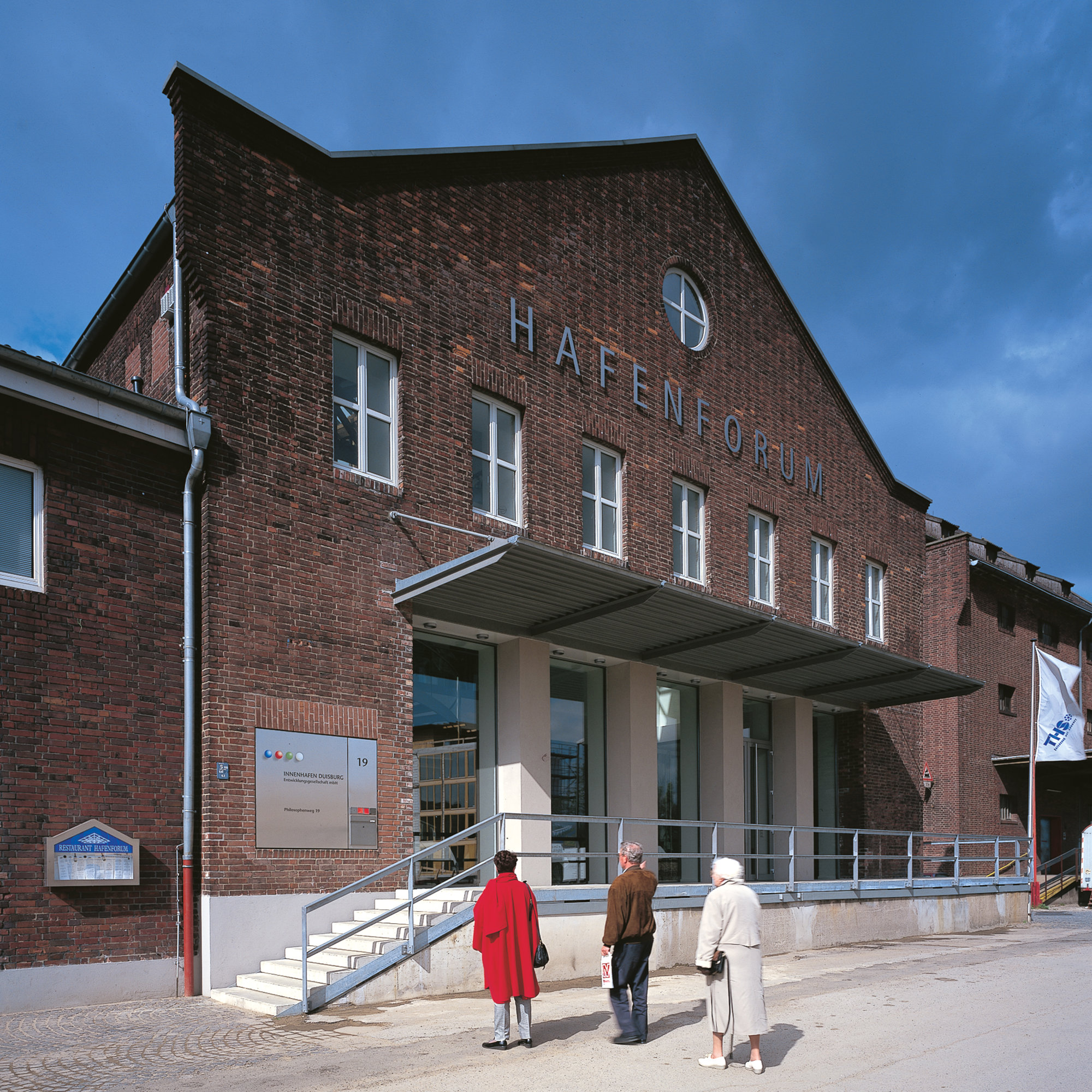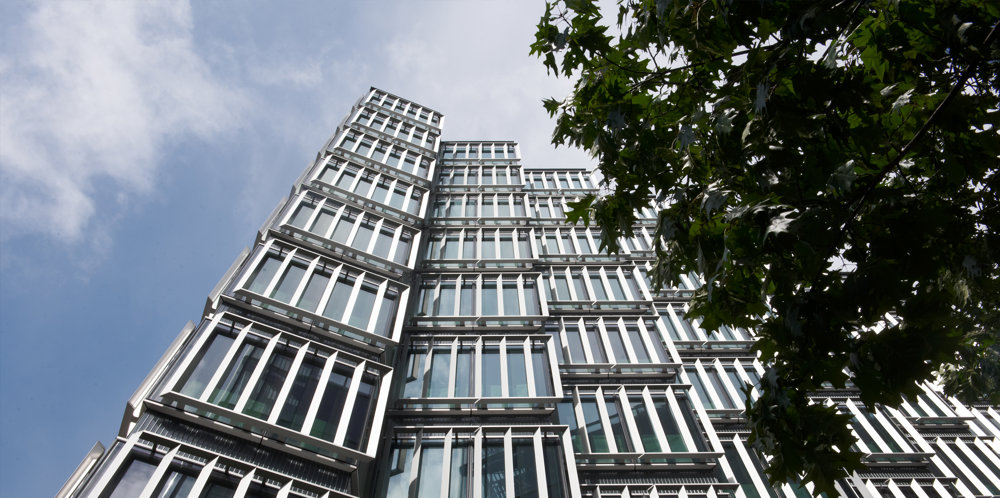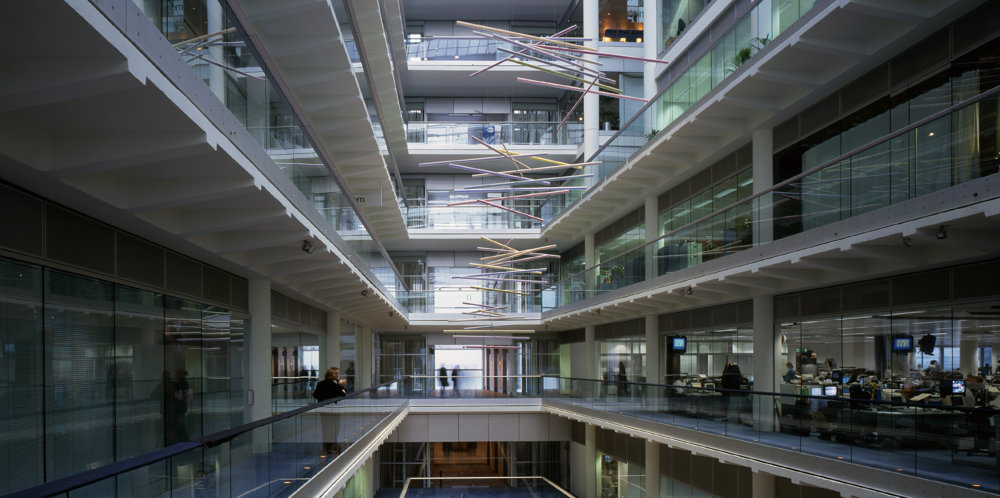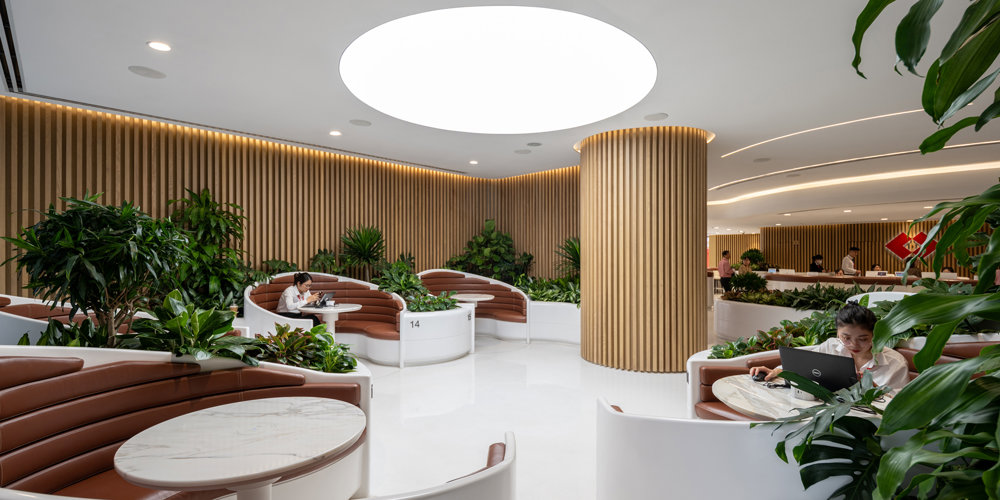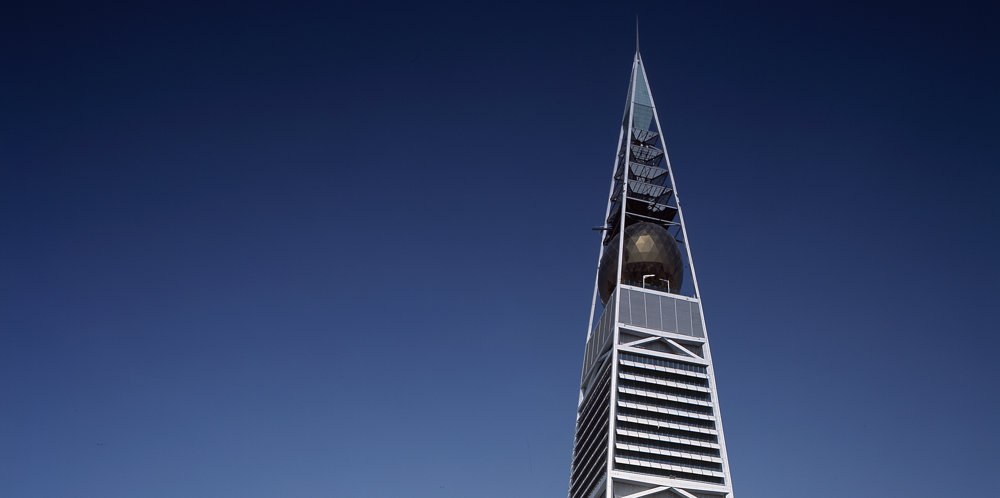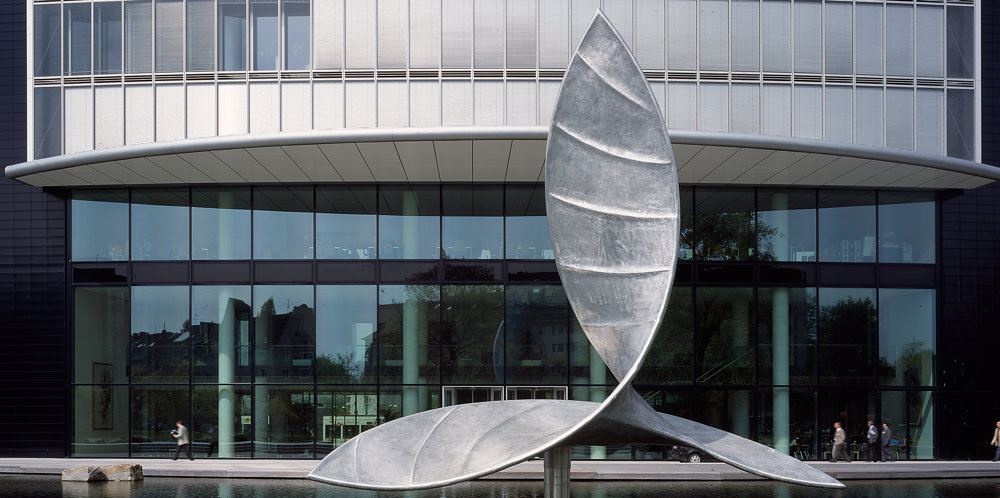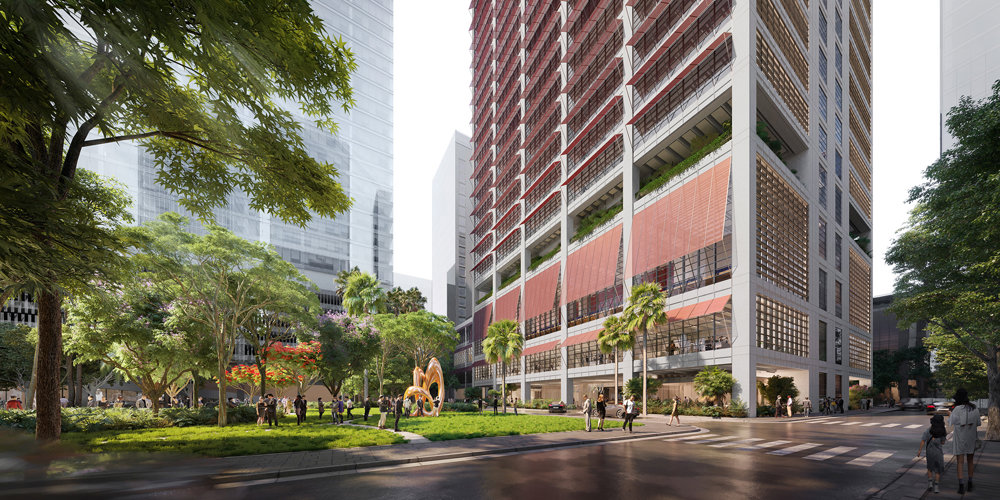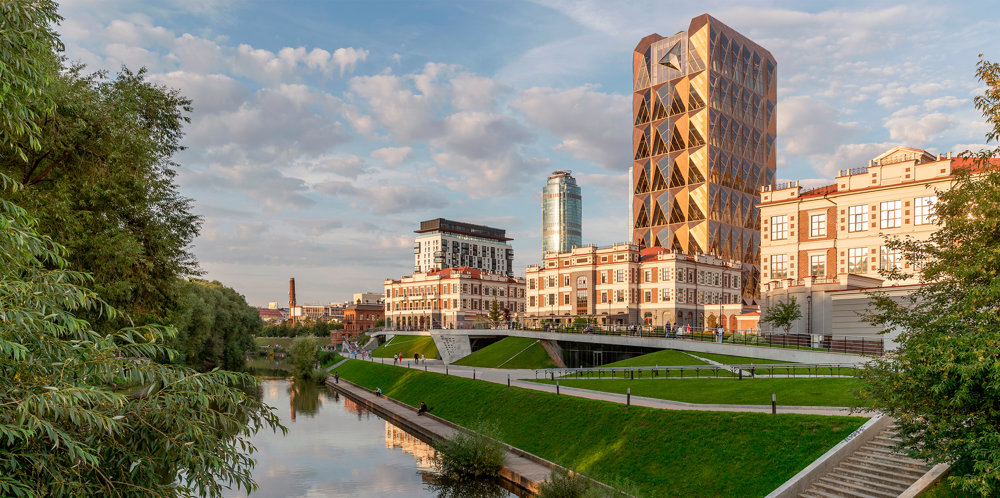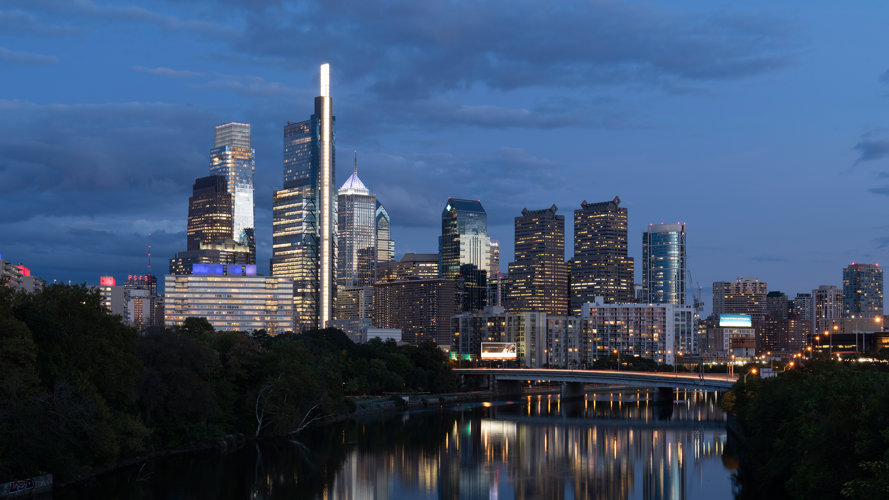In 1991 the practice won an international competition to masterplan Duisburg Inner Harbour - the largest inland harbour in the world. The scheme, set on an 89-hectare site, aims to connect the inner city with the water's edge and with areas north of the harbour. It includes new construction and selective refurbishment to provide residential, social and cultural accommodation together with commercial and light-industrial buildings.
The Steiger Schwanentor, a jetty which provides mooring facilities for sightseeing boats, was the first project to be completed. A pontoon and ramp system allows disabled access to boats. The four steel pontoons are linked to the bank by hinged steel ramps which can accommodate a variation in water levels of up to 7 metres. To complement these, a pedestrian promenade, developed along the western part of the harbour, introduces trees, lighting and balustrades.
Further east, the practice has converted an old grain warehouse into the 'Hafenforum' - offices for the Inner Harbour Development Company. Work on a dam and new canals has also been completed, and a major new housing scheme is under construction.
The 97-metre-long cofferdam, which supports a road deck, encloses a 600-metre boating lake. The water level is maintained at the previous high-water mark, making it more accessible from the quayside. The dam forms a physical link across the harbour, stimulating future development. One such project is Euro Gate, situated on the harbour's northern banks. Designed to draw visitors to the area, the complex will be a focal point of the harbour redevelopment.
South of the lake, three new canals penetrate a housing area, bringing the buildings into contact with the water's edge. The canals are fed by rain water run-off from surrounding streets and by ground water, using pumps powered by photovoltaic panels. Water is filtered through reed beds at the head of the canal, before being discharged into the lake.
Housing has already been constructed along the first canal. The practice is currently working on the design of a terraced housing block that includes low-cost apartments.










